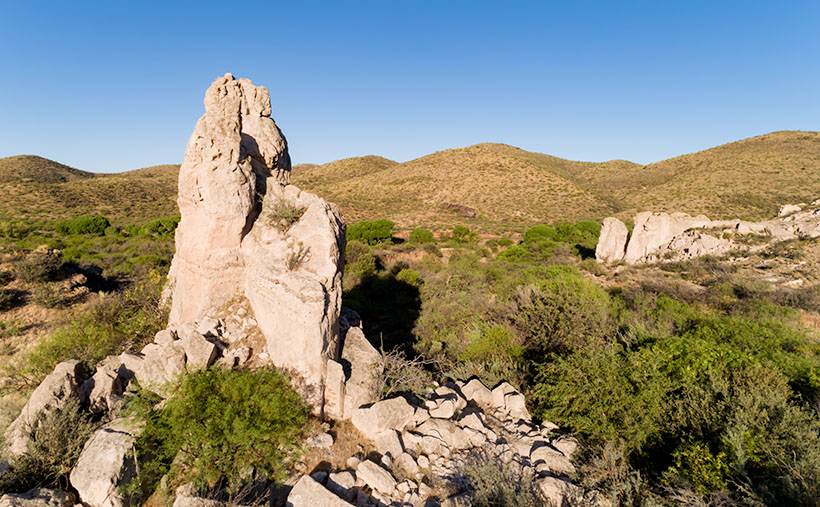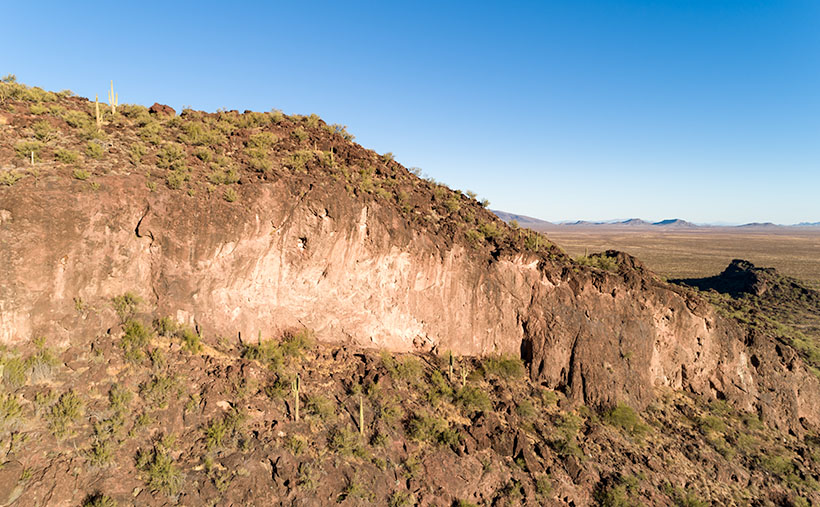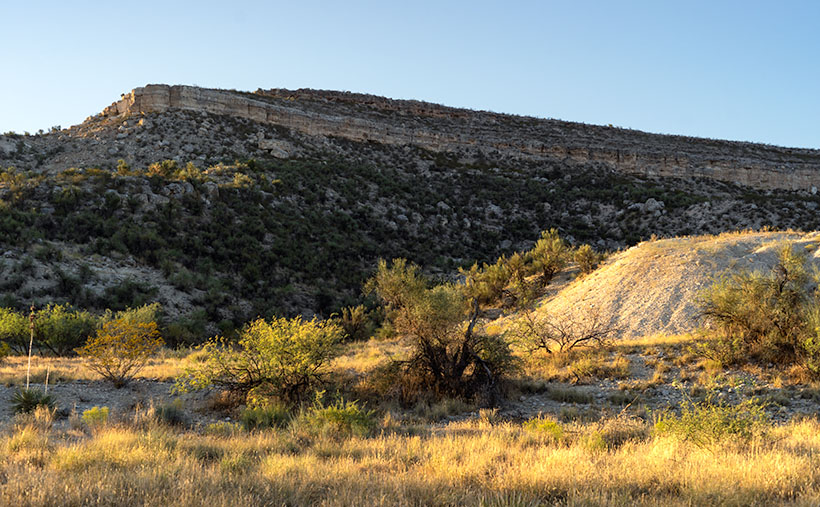When opportunity knocks, why not answer the door? I got this week’s picture that way—and last month’s grazing horses to boot. Here’s what I mean.
I had driven up to Skull Valley, intending only to get a shot of the red train station at sunrise, but after I got what I wanted, it was still early, and the light was wonderful. I decided to hang around and shoot the town’s other buildings. Since they’re all next to each other, I was finished, and I packed the truck by 6 am. The Ranch House wouldn’t be open yet, so I had time to kill.
About 3 or 5 miles south of Skull Valley—where the highway drops into Skull Valley Wash—there is an area of limestone deposits. I wrote about this place in my Kirkland Peak post and explained that you could see some interesting formations along the road. Because they were on private property, I’d been frustrated photographing them. On top of that, a new mine is moving in, and I’m afraid that they’ll flatten everything soon.

When I got to the hoodoos, it was still too early for the workers to be on shift, so I stopped at the north hoodoo to take this week’s photo. I call it Limestone Hoodoo. When I composed this image, I wanted to get the white rocks in their natural setting, and that’s why I included the outcrop on the right side. There’s a larger expanse of the limestone behind me—on the other side of the road—but so is a church and the mine.
Now for something completely different.
If you don’t mind, I’d like to digress and talk about something else. In June, I presented two styles of photography that I shoot, landscape and architecture. I would have preferred the month have consistent subjects, but there were only three buildings in town. So, I finished up this week with a nearby landscape, and the photo happened to tie up a loose end.
As you probably guessed, the biggest influence in my photography is Ansel Adams—and I’m only one of his numerous disciples. But—as I said at the month’s beginning—I also find historic things compelling, so I also shoot them as I trip over them. When I was a student at Phoenix College, I had a professor that said my buildings reminded her of the French photographer Eugène Atget. At the time, I didn’t know who that was, so I researched his work and concluded that she gave me a helluva compliment. I know that I’ll never fill either of those master’s shoes, but I still have fun following their footsteps.
The point that I’m trying to get to is how do you—my audience—feel about these subjects? Do you like one better than the other? Do you like the occasional variety, or do you get turned off when the subjects change? I’m very interested in your opinion, so please feel free to share them in the comments below.
You can see a larger version of Limestone Hoodoo on its Web Page by clicking here. Next week, I’ll have something from the other side of Congress, so be sure to come back for that.
Until next time — jw


